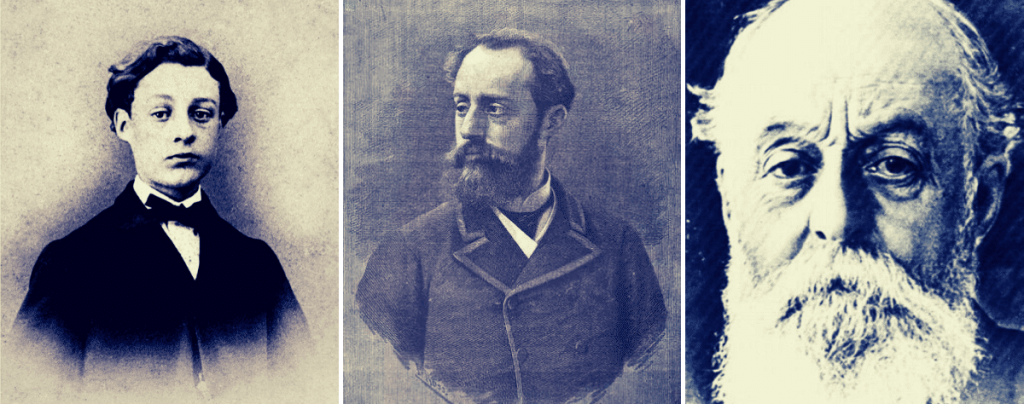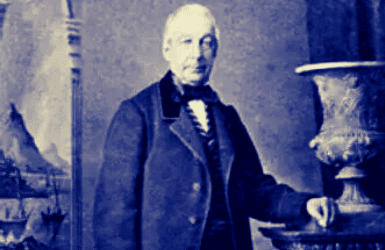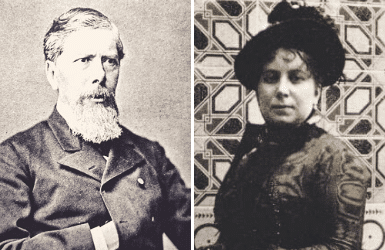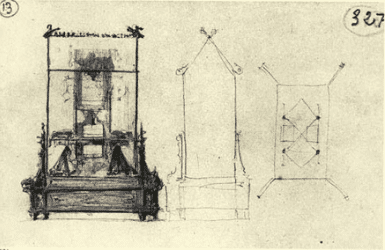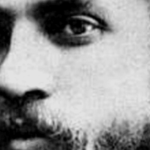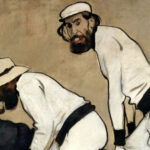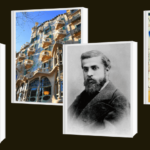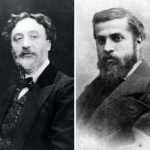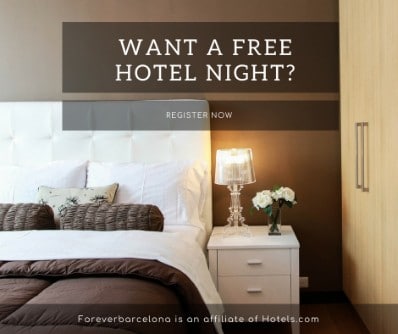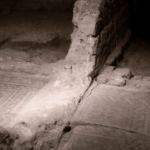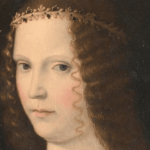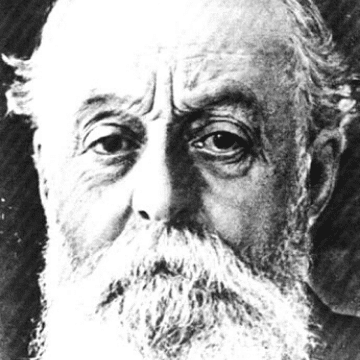
Who Was Eusebio Güell (Gaudi’s Patron)
THE COUNT GUELL AND ANTONI GAUDI
Eusebio Guell y Bacigalupi, known as the Count Guell, was the second richest person in Spain in the early 1900’s. He was a Renaissance man interested in art, science and business. Never afraid of sticking to his choices even if they went against the social thinking. The became the architect’s Antoni Gaudi best friend and most important patron, besides the Catholic church.
Today we are going to learn who was Eusebi Guell, where he came from and who were the significant people in his life.
What you need to know to understand the importance of Count Eusebio Guell
1
Why does the name "Guell" ring a bell?
- Park Guell. The most important project they did together was actually a failure. Guell had planned an entire land development of 60 villas in the hills North of Barcelona. Only 2 of them were finally built, and what’s’ worst: one was bought by a friend, and the other went to Gaudi. However, the facilities that the architect had time to build before the project was stopped will take you to a land of fantasy and fairy tales.
- Palau Guell. Gaudi was also in charge of building an impressive mansion right off the end of La Rambla. The Count hoped that the influence of the high society coming visiting would eventually help improving the situation of one of the worst and most dangerous districts in town (not that he was successful). Nonetheless, the visit shows you how Gaudi adapts to the opulence of the residence of a lord.
- Guell Colony (or Cripta Guell). The working class had started using violence to fight for their rights. Strikes spread chaos around Barcelona. Eusebio Guell understood the need of protecting his own employees from such bad influences. He then moved his textile factory to the countryside, where he created an industrial colony. There the workers would be isolated from the revolutionary and find everything they needed to live a simple life. They’ll find work (factory), food (from the factory co-op store), education (school) and spirituality (church). Gaudi was in charge of building that last one. Unfortunately, after finishing its basement (the crypt) he was told it was enough and couldn’t complete the rest.
- Guell Pavilions. The Guell family owned a real state in what was the suburbs of Barcelona. Gaudi was asked to build the entrance pavilions, one for the concierge and the other used as stables. The rough iron gate featuring a dragon and inspired in the story Hercules trip to the Hesperides garden, is quite stunning. Too bad not too many tourists have the time to ride all the way to Pedralbes just to see a pretty gate…
- Guell Cellar. The count owned a huge stone quarry near Sitges, and he asked Gaudi to build a wine cellar and some hunting pavilions for him in the area. The hunting pavilions were never done, but the cellar is now a restaurant used mostly for private events. You can see it for a few seconds from the highway on the way back to Barcelona from Sitges.
Besides all these projects that bear the name Guell, there were a few other commissions that Gaudi received thanks to the count contacts: the Capricho in Comillas, the Bishop palace of Astorga, the Casa Botines in Leon, the Artigas gardens, the Xalet Catllarà…
But who was that man that played such an important part in Gaudi’s life? Keep reading to be fascinated!
2
The Güell Family: his father Joan
The Count Guell was born in 1846, only male child of Joan Güell and Francesca Bacigalupi, who passed away only 20 days after giving birth to his son. His father married again, to his sister-in-law (such kind of “substitutions” were pretty common in those times). Unfortunately, his second wife died also after giving birth to her only baby girl.
Joan Guell was the son of a farmer and dressmaker. The family struggled, so Joan emigrated to the Americas. After a first stop in Santo Domingo, he headed to Cuba, where he amassed a fortune mostly due to slave trade. That was some 50 years before slavery would be abolished in Spain, and 20 before his son Eusebio would be born.
Back to Spain in 1830 he entered the heavy machinery business applied to textile industry. Later on, he took on the textile factory of his brother-in-law when he passed away. From there his wealth would only grow, as he never stopped studying. When the working class started revolting and rioting, Eusebio was just a 10yo kid. Joan decided to spending more time in the countryside and in France. That’s when he became active in the local and national political life and writing for the press.
3
Wife and Father in law: the Lopez family
Thirty years older than Eusebi Guell, Antonio López y López was born in Comillas, in the Northern region of Cantabria. His family was poor, and his father passed away when he was just 6yo. Emigrating to South of Spain didn’t work, so at some point in his twenties he took a ship to Cuba (still part of the Spanish Empire in those times).
There he’d end up founding a transatlantic ship company, that would be eventually responsible of the post services between the Island and Spain. But they also transported passengers, specially soldiers destined to Cuba: more than 400,000 in the total history of the company.
He founded a bank and finally settled down in Barcelona, where he married. He got involved in tobacco import from the Philippines (still Spanish by then), railways and coal mining. He was said to be the richest person in Spain. That’s why King Alphonso XII granted him the title of Marquis of Comillas in acknowledgement of his contribution to the growth of the Spanish wealth.
Joan Güell and Antonio López had met in Cuba dealing with slaves and they became friends. So it’s not surprising that Eusebio married Antonio’s daughter Isabel and soon started participating in his father-in-law businesses. Marriage was not about love in those times…
4
Business career
If by being the only male heir of his father Eusebio inherited a considerable fortune, he didn’t stop there. He had studied in Barcelona, France and England, so he had a solid culture and background that he used to expand his wealth.
A visionary, he had the idea to move his father’s Vapor Vell textile factory out of the city to the river valley, where he created an industrial colony where his workers would have everything they needed to leave decently… and stay away from the violent influences of the anarchists.
He became the owner of two stone quarries, that provided him with the necessary raw materials to start the very first concrete factory in Spain. And his marriage with Isabel de Comillas led him to participate in the many business of the López family there and abroad. Eusebi Guell had become the second richest person of Spain… married to the daughter of the first richest one.
5
Nobiliary Title
King Alphonse XIII was the son of the king that made Antonio López a marquis. His father died before he was born, and his mother Maria Cristina acted as a regent until he was crowned at age 16. She gave him a strict education, but kept him unaware of the difficult political and social problems. So when he became king, he despised the constitutional frame and friended the military.
He wouldn’t be skilled enough to bring the much needed political stability to the country. Soon he started losing supports and went to exile to never come back. Some 20 years earlier, though, Alphonse XIII had followed his father example and rewarded those businessmen that had amassed large fortunes. Eusebio Guell became the Count Guell in 1908. Three years later, Eusebio’s two oldest male children were also given the titles of viscount and baron.
The great-grandchild of Eusebi Guell is nowadays the third Count Guell in history (as the grandchild Joan Claudio never claimed the title to himself).
AND FINALLY! How did Gaudi and Guell meet and what was their relationship?
6
Guell and Gaudi
Gaudi was a young man, not famous yet, when he presented a piece of furniture to the Universal Exhibition of Paris in 1878 and got an award. The count was visiting and was fascinated by that piece, a cabinet Gaudi had designed for a gloves shop. Once in Barcelona it wasn’t hard for him to track the author and getting to meet him.
Soon the outside-of-the-box and visionary personalities of both men clicked. The Count Guell started entrusting Gaudi a variety of projects: small at first, more complex as they got to know better each other. By the time Gaudi started building Palau Guell (1886-88), Guell was completely confiding in the architect. He gave him total freedom to spend as much as needed in materials. He’d event accept the wildest designs for key elements, despite everyone else telling him to go for more traditional options.
What else did they have in common? The count was a prominent member of the local freemasonry, but there’s no records of Gaudi ever belonging to the community. He might have had access to some of its secrets and beliefs, though. There’s who wants to see freemason symbols all around Park Guell…
The final question remains: were they more than friends? Rumors go that they could have been a secret homosexual couple. We will never know, but if you want to know my take they probably weren’t. True: love is something that you can’t help. I’m not denying that there could have been some kind of attraction. However, the society of the early 1900’s was very VERY prude. And Gaudi was a convinced Catholic that attended mass once a day whenever was possible. If he ever felt anything that Catholicism would see “immoral” and “against human nature”, he would have surely kept it in secret. He would have been ashamed, suffered and never confessed his passions. Really sad, but that’s how life was in those times. He never married either (officially heartbroken after a youth love rejected him). He devoted his life to architecture instead.
Will you be visiting any of the buildings owned by Eusebio Guell when you come to Barcelona?
Marta
RESEARCHING FOR A TRIP IS TIME-CONSUMING…
Need more inspiration?
Our 100% FREE Barcelona Collection will give you everything you need to organize the trip of your lifetime to Barcelona.
BEST INSIDER TIPS FROM THE PROS!


